Themed collection #MyFirstChemSci 2023

Organocatalytic activation of hydrogen peroxide: towards green and sustainable oxidations
Green oxidation reactions performed by organocatalytic activation of hydrogen peroxide.

Chem. Sci., 2024,15, 1177-1203
https://doi.org/10.1039/D3SC05618J
Recent developments for intermolecular enantioselective amination of non-acidic C(sp3)–H bonds
Recently, the field of intermolecular enantioselective amination of non-acidic C(sp3)–H bonds has witnessed rapid advances, which are discussed in this perspective
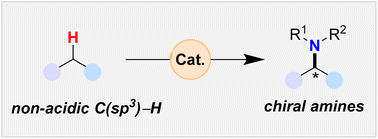
Chem. Sci., 2023,14, 13278-13289
https://doi.org/10.1039/D3SC04643E
Advancing cell surface modification in mammalian cells with synthetic molecules
This review offers a survey of recent advancements in the modification of mammalian cell surfaces through the use of synthetic molecules and concludes by addressing the present challenges and potential opportunities in this rapidly expanding field.

Chem. Sci., 2023,14, 13325-13345
https://doi.org/10.1039/D3SC04597H
What is the nature of the uranium(III)–arene bond?
Complexes of the form [U(η6-arene)(BH4)3] where arene = C6H6; C6H5Me; C6H3-1,3,5-R3 (R = Et, iPr, tBu, Ph); C6Me6; and triphenylene (C6H4)3 were investigated towards an understanding of the nature of the uranium–arene interaction.

Chem. Sci., 2024,15, 1810-1819
https://doi.org/10.1039/D3SC04715F
Keeping an “eye” on the experiment: computer vision for real-time monitoring and control
Chemists heavily rely on visual cues for routine tasks. Here, we introduce a computer vision system to automatically monitor and control diverse workup processes based on visual aspects, advancing toward autonomous operations.

Chem. Sci., 2024,15, 1271-1282
https://doi.org/10.1039/D3SC05491H
PolyNC: a natural and chemical language model for the prediction of unified polymer properties
PolyNC directly infers properties based on human prompts and polymer structures, enabling an end-to-end learning that encourages the model to autonomously acquire fundamental polymer knowledge, in a multi-task, multi-type unified model manner.

Chem. Sci., 2024,15, 534-544
https://doi.org/10.1039/D3SC05079C
Cucurbituril-based supramolecular host–guest complexes: single-crystal structures and dual-state fluorescence enhancement
Two supramolecular complexes were prepared using cucurbiturils [CBs] as mediators and a four-armed p-xylene derivative (M1) as a guest molecule.

Chem. Sci., 2024,15, 458-465
https://doi.org/10.1039/D3SC04813F
Aggregate assembly of ferrocene functionalized indium-oxo clusters
Presented here are a series of ferrocene-functionalized high-nuclear indium-oxo clusters (InOC), containing thirteen-nuclear and cubane-type heptanuclear InOCs. The self-assembly of them leads to the formation of dimers, tetramers, and one-dimensional extended structures.

Chem. Sci., 2024,15, 726-735
https://doi.org/10.1039/D3SC05824G
Unveiling the topology of partially disordered micro-crystalline nitro-perylenediimide with X-aggregate stacking: an integrated approach
An interdisciplinary approach to derive the structure of a disordered supramolecular system.

Chem. Sci., 2024,15, 490-499
https://doi.org/10.1039/D3SC05514K
Towards designer polyolefins: highly tuneable olefin copolymerisation using a single permethylindenyl post-metallocene catalyst
Using a highly active permethylindenyl-phenoxy (PHENI*) titanium catalyst, high to ultra-high molecular weight ethylene–linear-α-olefin copolymers are prepared in high yields, with exceptional comonomer affinity, and predictable, tuneable composition.

Chem. Sci., 2024,15, 250-258
https://doi.org/10.1039/D3SC04861F
Endogenous metal-ion dynamic nuclear polarization for NMR signal enhancement in metal organic frameworks
Dynamic nuclear polarization from endogenous metal ions is an efficient route to increase the sensitivity of solid-state NMR for probing host-guest interactions for rational design of metal organic frameworks (MOFs).
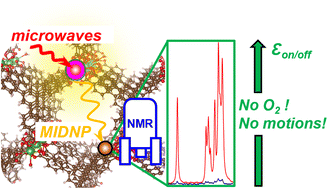
Chem. Sci., 2024,15, 336-348
https://doi.org/10.1039/D3SC03456A
Photocatalytic (3 + 2) dipolar cycloadditions of aziridines driven by visible-light
Herein, we document the design and development of a novel (3 + 2) cycloaddition reaction aided by the activity of an organic photocatalyst and visible light.

Chem. Sci., 2024,15, 271-277
https://doi.org/10.1039/D3SC05997A
A single phosphorylation mechanism in early metabolism – the case of phosphoenolpyruvate
A nonenzymatic reaction converting pyruvate to phosphoenolpyruvate (PEP) is shown to proceed through carboxylate phosphorylation, suggesting that only a single phosphorylation mechanism was needed to initiate metabolic networks.

Chem. Sci., 2023,14, 14100-14108
https://doi.org/10.1039/D3SC04116F
From non-conductive MOF to proton-conducting metal-HOFs: a new class of reversible transformations induced by solvent-free mechanochemistry
All coordination bridges in a non-conductive MOF are broken by force to make the material a proton conductor.

Chem. Sci., 2023,14, 14176-14181
https://doi.org/10.1039/D3SC04401G
Hydrogen spillover and substrate–support hydrogen bonding mediate hydrogenation of phenol catalyzed by palladium on reducible metal oxides
Surface contrast solution NMR and reaction kinetic assays reveal an active role for H2 spillover in the phenol hydrogenation reaction catalyzed by Pd on reducible metal oxides.

Chem. Sci., 2023,14, 14166-14175
https://doi.org/10.1039/D3SC02913A
Understanding divergent substrate stereoselectivity in the isothiourea-catalysed conjugate addition of cyclic α-substituted β-ketoesters to α,β-unsaturated aryl esters
Divergent stereoselectivity is rationalised in isothiourea catalysed conjugate additions of β-keto esters.

Chem. Sci., 2023,14, 14146-14156
https://doi.org/10.1039/D3SC05470E
Improving the potential of paraCEST through magnetic-coupling induced line sharpening
A paramagnetic chemical exchange saturation transfer (paraCEST) imaging agent based on a homodinuclear Ni(II) complex exhibits enhanced CEST efficiency due to magnetic-coupling induced line sharpening effect.
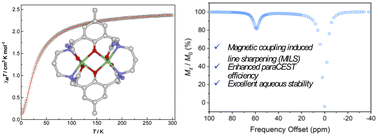
Chem. Sci., 2023,14, 14157-14165
https://doi.org/10.1039/D3SC04770A
Synthesis of substituted benzylboronates by light promoted homologation of boronic acids with N-sulfonylhydrazones
The homologation of boronic acids with diazoalkanes obtained by photochemical decomposition of N-tosylhydrazones leads to substituted benzylboronates, previously unavailable under thermal conditions. Batch and continuous flow reactions are described.

Chem. Sci., 2023,14, 13765-13775
https://doi.org/10.1039/D3SC05678C
Intramolecular donor-stabilized tetra-coordinated germanium(IV) di-cations and their Lewis acidic properties
Intramolecular phosphine-stabilized tetra-coordinated Ge(IV) di-cations are established. Dispersed charges lead to Si–H activation initially at the P-site, which ultimately migrates to the Ge-site due to geometric constraint empowered Lewis acidity.

Chem. Sci., 2023,14, 13755-13764
https://doi.org/10.1039/D3SC03717G
Engineering TADF, mechanochromism, and second harmonic up-conversion properties in regioisomeric substitution space
Fine-tuning of TADF, mechanochromic luminescence (MCL), and second harmonic generation (SHG) properties among three donor–acceptor based regio-isomers have been explored in this research article based on both theoretical and experimental outcomes.

Chem. Sci., 2023,14, 13832-13841
https://doi.org/10.1039/D3SC04280D
Regioselective ortho halogenation of N-aryl amides and ureas via oxidative halodeboronation: harnessing boron reactivity for efficient C–halogen bond installation
We report the discovery of an ortho regioselective oxidative halodeboronation of N-aryl amides and ureas with wide-ranging applications in pharmaceuticals, materials science, and synthetic organic chemistry.

Chem. Sci., 2023,14, 13429-13436
https://doi.org/10.1039/D3SC04628A
Merging electrocatalytic alcohol oxidation with C–N bond formation by electrifying metal–ligand cooperative catalysts
For the first time, metal–ligand cooperative catalysts were electrified to merge molecular electrocatalytic alcohol oxidation with C–N bond formation (over 30 imines, F.E. up to 99%, energy efficiency increased by order of magnitude).

Chem. Sci., 2023,14, 13437-13445
https://doi.org/10.1039/D3SC03408A
Net-clipping as a top-down approach for the prediction of topologies of MOFs built from reduced-symmetry linkers
Net-clipping is a strategy for the topological prediction of MOFs built with reduced-symmetry linkers. It is based on the deconstruction of nets by clipping half of the connectivity in tetrahedral, hexagonal, cubic or hexagonal prismatic nodes.

Chem. Sci., 2023,14, 12984-12994
https://doi.org/10.1039/D3SC04406H
Conformational control enables boroxine-to-boronate cage metamorphosis
The conformational control of boronic acid building blocks allows efficient self-assembly into a tetrahedral boroxine cage. The nano-sized cage displays molecular metamorphosis, converting from a boroxine tetrapod to a boronate bipyramid.

Chem. Sci., 2023,14, 12953-12960
https://doi.org/10.1039/D3SC02920D
Revisiting organic charge-transfer cocrystals for wide-range tunable, ambient phosphorescence
A wide-range tunable triplet charge-transfer (3CT) phosphorescence emission is achieved by an intermolecular through-space charge-transfer cocrystallization approach using pyromellitic diimide as the acceptor and different donors.

Chem. Sci., 2023,14, 12548-12553
https://doi.org/10.1039/D3SC04001A
Controllable synthesis of a Na-enriched Na4V2(PO4)3 cathode for high-energy sodium-ion batteries: a redox-potential-matched chemical sodiation approach
A phenazine-mediated ambient chemical sodiation strategy is first proposed to controllably synthesize a Na-enriched Na4V2(PO4)3 cathode, which serves as an endogenous Na+ reservoir to compensate for irreversible sodium loss of sodium-ion full cells.

Chem. Sci., 2023,14, 12570-12581
https://doi.org/10.1039/D3SC03498D
Skeletal rearrangement through photocatalytic denitrogenation: access to C-3 aminoquinolin-2(1H)-ones
Selective installation of an amino group on heterocyclic ring employing the skeletal editing approach has been explored. We discussed a regioselective denitrogenative amination strategy to access C-3 aminoquinolin-2(1H)-ones utilizing 3-ylideneoxindoles and TMSN3 as an aminating agent.

Chem. Sci., 2023,14, 12541-12547
https://doi.org/10.1039/D3SC04447E
N-Acyloxymethyl-phthalimides deliver genotoxic formaldehyde to human cells
N-Acyloxymethyl-phthalimides are esterase-sensitive chemical tools that enable controllable delivery of formaldehyde to human cells.

Chem. Sci., 2023,14, 12498-12505
https://doi.org/10.1039/D3SC02867D
Trifluoromethylarylation of alkenes using anilines
This work unlocks the use of anilines in the selective trifluoromethylarylation of olefins via a mild protocol that avoids transition metals, expensive photocatalysts and additives, where hexafluoroisopropanol is a unique solvent that promotes it.

Chem. Sci., 2023,14, 12083-12090
https://doi.org/10.1039/D3SC03868H
EnzyKR: a chirality-aware deep learning model for predicting the outcomes of the hydrolase-catalyzed kinetic resolution
EnzyKR is designed to guide the identification of hydrolase scaffolds for resolving a racemic substrate mixture for stereoselective synthesis.

Chem. Sci., 2023,14, 12073-12082
https://doi.org/10.1039/D3SC02752J
Transient co-assemblies of micron-scale colloids regulated by ATP-fueled reaction networks
An ATP-fueled DNA based enzymatic reaction network regulates transient co-assemblies of micron-scale colloids. The system produces minimal waste, shows ATP-dependent behavior, and can be reactivated for up to three consecutive cycles.

Chem. Sci., 2023,14, 12299-12307
https://doi.org/10.1039/D3SC04017H
New insights into H2 activation by intramolecular frustrated Lewis pairs based on aminoboranes: the local electrophilicity index of boron as a suitable indicator to tune the reversibility of the process
The condensed-to-boron electrophilicity index (ωB) is a tunable property to rationally perform modifications for reaching reversibility in H2 activation by intramolecular aminoborane frustrated Lewis pairs.

Chem. Sci., 2023,14, 11798-11808
https://doi.org/10.1039/D3SC03992G
Unveiling polyamorphism and polyamorphic interconversions in pharmaceuticals: the peculiar case of hydrochlorothiazide
Three polyamorphs of hydrochlorothiazide with distinct physicochemical properties were discovered. MD simulations show different dihedral angle distributions in polyamorphs I and II. Polyamorphs I and III were converted into polyamorph II.

Chem. Sci., 2023,14, 11447-11455
https://doi.org/10.1039/D3SC02802J
Directing group assisted para-selective C–H alkynylation of unbiased arenes enabled by rhodium catalysis
A first work on rhodium-catalyzed para-selective C–H alkynylation has been reported and its mechanistic insights were gleaned from experimental and computational studies.
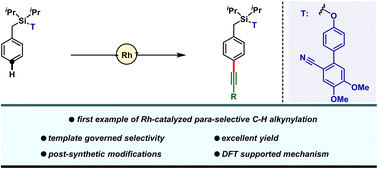
Chem. Sci., 2023,14, 11381-11388
https://doi.org/10.1039/D3SC03528J
Resolving a guanine-quadruplex structure in the SARS-CoV-2 genome through circular dichroism and multiscale molecular modeling
Parallel or hybrid? A combination of multiscale molecular modeling and circular dichroism is used to predict a G-quadruplex structure at atomistic resolution in the SARS-CoV-2 genome.

Chem. Sci., 2023,14, 11332-11339
https://doi.org/10.1039/D3SC04004F
Electron count and ligand composition influence the optical and chiroptical signatures of far-red and NIR-emissive DNA-stabilized silver nanoclusters
AgN-DNAs emitters at the far red/NIR spectral border have either 6 or 8 valence electrons and at least three distinct ligand compositions. Stokes shift magnitude and CD signatures are correlated with ligand composition.

Chem. Sci., 2023,14, 11340-11350
https://doi.org/10.1039/D3SC02931J
NMR exchange dynamics studies of metal-capped cyclodextrins reveal multiple populations of host–guest complexes in solution
Utilizing lanthanide-modified cyclodextrins and implementing the 19F-paraGEST method, up to three different co-existing populations of Ln-β-CD-guest complexes were experimentally identified, despite having similar thermodynamic and kinetic properties.

Chem. Sci., 2023,14, 11351-11358
https://doi.org/10.1039/D3SC03630H
Generative organic electronic molecular design informed by quantum chemistry
Reinforcement learning methods, coupled with quantum chemistry, discover a diverse set of organic singlet fission and triplet–triplet annihilation candidates.

Chem. Sci., 2023,14, 11045-11055
https://doi.org/10.1039/D3SC03781A
Photocyclization by a triplet–triplet annihilation upconversion pair in water – avoiding UV-light and oxygen removal
A commercially available upconversion pair is applied to promote a photocyclization for the synthesis of bioisosteres using green light irradiation. The reaction concept is enabled to run in water without oxygen removal by a micellar medium.

Chem. Sci., 2023,14, 11040-11044
https://doi.org/10.1039/D3SC03242F
A tunable family of CAAC-ruthenium olefin metathesis catalysts modularly derived from a large-scale produced ibuprofen intermediate
A tunable family of ibuprofen intermediate-derived CAAC-base complexes for different applications, dependent from the size of the N-aryl substituent.
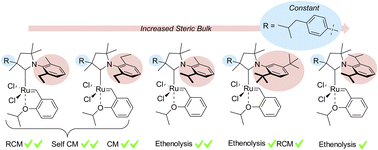
Chem. Sci., 2023,14, 10744-10755
https://doi.org/10.1039/D3SC03849A
Hybrid bronzes: mixed-valence organic–inorganic metal oxides as a tunable material platform
Hybrid bronzes are air/water-stable mixed-valence organic–inorganic metal oxides displaying tunable optoelectronic properties and high conductivity relevant for energy-related applications.

Chem. Sci., 2023,14, 10756-10767
https://doi.org/10.1039/D3SC03828A
“Freedom of design” in chemical compound space: towards rational in silico design of molecules with targeted quantum-mechanical properties
This work demonstrates that “freedom of design” is a fundamental and emergent property of chemical compound space. Such intrinsic flexibility enables rational design of distinct molecules sharing an array of targeted quantum-mechanical properties.

Chem. Sci., 2023,14, 10702-10717
https://doi.org/10.1039/D3SC03598K
Microscopic insight into the shaping of MOFs and its impact on CO2 capture performance
The traditional synthesis method produces microcrystalline powdered MOFs, which prevents direct implementation in real-world applications which demand strict control of shape, morphology and physical properties.

Chem. Sci., 2023,14, 10435-10445
https://doi.org/10.1039/D3SC04218A
Benchmarking the placement of hydrosulfide in the Hofmeister series using a bambus[6]uril-based ChemFET sensor
Bambusuril-containing ChemFET sensor membranes show excellent selectivity for HS− and inform on its placement in the Hofmeister series.
![Graphical abstract: Benchmarking the placement of hydrosulfide in the Hofmeister series using a bambus[6]uril-based ChemFET sensor](/en/Image/Get?imageInfo.ImageType=GA&imageInfo.ImageIdentifier.ManuscriptID=D3SC03616B&imageInfo.ImageIdentifier.Year=2023)
Chem. Sci., 2023,14, 10273-10279
https://doi.org/10.1039/D3SC03616B
Dimeric tetrabromo-p-quinodimethanes: synthesis and structural/electronic properties
High bromine containing dimers of tetrabromoanthra-p-quinodimethane as appealing building-blocks for organic synthesis. Thorough study of their isomerism and optoelectronic properties.

Chem. Sci., 2023,14, 10112-10120
https://doi.org/10.1039/D3SC01615C
Ortho-Selective amination of arene carboxylic acids via rearrangement of acyl O-hydroxylamines
Aromatic acyl O-hydroxylamines, synthesised in one straightforward step, undergo rearrangement under simple conditions to give ortho-aminated arenes. For benzoic acid-derived substrates, this leads directly to unprotected anthranilic acids.

Chem. Sci., 2023,14, 10103-10111
https://doi.org/10.1039/D3SC03293K
A macrocyclic quinol-containing ligand enables high catalase activity even with a redox-inactive metal at the expense of the ability to mimic superoxide dismutase
Manganese, iron, and zinc complexes with the macrocyclic quinol-containing ligand H4qp4 are highly active and durable catalysts for the dismutation of hydrogen peroxide but do not efficiently dismutate superoxide.

Chem. Sci., 2023,14, 9910-9922
https://doi.org/10.1039/D3SC02398B
A unified strategy for the synthesis of aldohexoses by boronate assisted assembly of CH2X2 derived C1-building blocks
The synthesis of aldohexoses from CH2X2 derived C1-building blocks relies on Matteson homologation and strategically applied, boron mediated olefinations. A 25 min video tutorial is available via QR-code or this link: https://youtu.be/vXy5oVavJUU.

Chem. Sci., 2023,14, 9838-9842
https://doi.org/10.1039/D3SC03778A
Interrogating bioinspired ESIPT/PCET-based Ir(III)-complexes as organelle-targeted phototherapeutics: a redox-catalysis under hypoxia to evoke synergistic ferroptosis/apoptosis
We investigated organelle-targeted bioinspired ESIPT/PCET-based Ir(iii)-complexes as promising (photo)chemotherapeutic lead compounds which actively operational in redox-catalysis under hypoxia to evoke synergistic ferroptosis/apoptosis.

Chem. Sci., 2023,14, 9872-9884
https://doi.org/10.1039/D3SC03096B
Kinetics of ligand exchange in solution: a quantitative mass spectrometry approach
Delayed reactant labelling can provide thermodynamic parameters (ΔG, ΔH, and ΔS) of solution equilibria using ESI-MS monitoring. As a proof of concept, we investigated the equilibria of pyridine ligands with macrocyclic porphyrin cage complexes.

Chem. Sci., 2023,14, 9759-9769
https://doi.org/10.1039/D3SC03342B
Stabilisation of the RirA [4Fe–4S] cluster results in loss of iron-sensing function
The regulator RirA senses Fe through its [4Fe–4S] cluster, which may have only three Cys ligands from the protein. Addition of a likely fourth Asp ligand stabilised the cluster, rendering it unable to sense Fe and locked into its DNA-binding state.
![Graphical abstract: Stabilisation of the RirA [4Fe–4S] cluster results in loss of iron-sensing function](/en/Image/Get?imageInfo.ImageType=GA&imageInfo.ImageIdentifier.ManuscriptID=D3SC03020B&imageInfo.ImageIdentifier.Year=2023)
Chem. Sci., 2023,14, 9744-9758
https://doi.org/10.1039/D3SC03020B
A natural polyphenol activates and enhances GPX4 to mitigate amyloid-β induced ferroptosis in Alzheimer's disease
Tannic acid (TA) mitigates ferroptosis induced by amyloid β-Fe in Alzheimer's disease (AD) through a multipronged activity. TA activates and enhances the GPX4 levels to counteract the complex interaction between AD and ferroptosis.

Chem. Sci., 2023,14, 9427-9438
https://doi.org/10.1039/D3SC02350H
Dynamic-dependent selectivity in a bisphosphine iron spin crossover C–H insertion/π-coordination reaction
Organometallic reaction selectivity is governed by dynamic motion rather than transition states or spin crossover.

Chem. Sci., 2023,14, 9400-9408
https://doi.org/10.1039/D3SC02078A
Improving the molecular spin qubit performance in zirconium MOF composites by mechanochemical dilution and fullerene encapsulation
Mechanochemical encapsulation of C60 fullerene leads to a change in selectivity in the topology outcome and a significant increase in coherence among spin-active centers embedded in a moderately porous zirconium PCN-223 porphyrinic framework.

Chem. Sci., 2023,14, 9389-9399
https://doi.org/10.1039/D3SC03089J
Studying manganese carbonyl photochemistry in a permanently porous metal–organic framework
Photo-liberation of CO from a Mn(diimine)(CO)3Br moiety anchored within a permanently porous MOF support is studied. The crystallinity and structural flexibility of the MOF allows crystallographic snapshots of the photolysis products to be obtained.

Chem. Sci., 2023,14, 9409-9417
https://doi.org/10.1039/D3SC03553K
Suitability of a diamine functionalized metal–organic framework for direct air capture
A comprehensive examination of mmen-Mg2(dobpdc) as a direct air capture adsorbent to determine its practical feasibility and performance for potential industrialization in mitigating climate change by reducing atmospheric CO2 levels.

Chem. Sci., 2023,14, 9380-9388
https://doi.org/10.1039/D3SC02554C
Photoinduced iron-catalyzed C–H alkylation of polyolefins
A method for chemically introducing diverse polar groups into polyolefins via photoinduced iron-catalyzed C–H bond alkylation is reported. Diverse functional groups and polyolefins could be tolerated, and the multiply functionalized polymer could be synthesized through a module-assembled process.
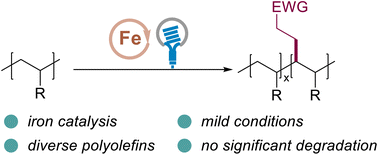
Chem. Sci., 2023,14, 9374-9379
https://doi.org/10.1039/D3SC03252C
A transient vesicular glue for amplification and temporal regulation of biocatalytic reaction networks
A transient vesicular assembly enables gluing of enzymes, with augmented catalysis. Efficient temporal control of the enzyme activities is achieved even in complex reaction networks.

Chem. Sci., 2023,14, 9267-9282
https://doi.org/10.1039/D3SC00195D
Boroles from alumoles: accessing boroles with alkyl-substituted backbones via transtrielation
The synthesis of monomeric 2,3,4,5-tetraalkyl-substituted boroles via metallacycle transfer from an alumole is reported.

Chem. Sci., 2023,14, 9010-9015
https://doi.org/10.1039/D3SC02668J
Role of mutations in a chemoenzymatic enantiodivergent C(sp3)–H insertion: exploring the mechanism and origin of stereoselectivity
A molecular level understanding into the role of mutations in a cytochrome P450 catalyzed enantiodivergent carbene insertion reaction is provided through the use of computational tools.

Chem. Sci., 2023,14, 8810-8822
https://doi.org/10.1039/D3SC02788K
Push-pull photochromic dyes for semi-transparent solar cells with light-adjustable optical properties and high color-rendering index
Using push–pull photochromic dyes with carbazole units, we have fabricated translucent photovoltaic devices that vary their transparency with light intensity and maintain a high colour rendering index.

Chem. Sci., 2023,14, 8497-8506
https://doi.org/10.1039/D3SC02328A
A visible-light-driven molecular motor based on barbituric acid
Yeehaw! The rotation of a visible-light-driven molecular motor based on barbituric acid is tamed by a hydrogen bonding “lasso” mechanism between its serendipitously-formed tertiary hydroxy stereocentre and its lower half carbonyl groups.

Chem. Sci., 2023,14, 8458-8465
https://doi.org/10.1039/D3SC03090C
Tidying up the conformational ensemble of a disordered peptide by computational prediction of spectroscopic fingerprints
Pairing experiments with simulations, we predict spectroscopic fingerprints, enhancing understanding of disordered peptides' conformational ensembles. This helps rationalize elusive structure-spectra relationships for these peptides and proteins.
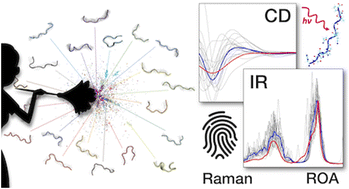
Chem. Sci., 2023,14, 8483-8496
https://doi.org/10.1039/D3SC02202A
Fragment expansion with NUDELs – poised DNA-encoded libraries
Fragment growing using poised DNA-encoded libraries, which allow the coupling of a targeted active fragment, allows the optimisation of fragment hits to potent compounds in a single operation, illustrated by the discovery of a 51 nM BRD4 ligand.
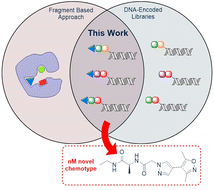
Chem. Sci., 2023,14, 8288-8294
https://doi.org/10.1039/D3SC01171B
2,5-disubstituted bicyclo[2.1.1]hexanes as rigidified cyclopentane variants
Identification of rigid counterparts for common flexible scaffolds is crucial to the advancement of medicinal chemistry. Herein, synthesis of new bicyclo[2.1.1]hexanes to act as rigidified cyclopentanes is described.
![Graphical abstract: 2,5-disubstituted bicyclo[2.1.1]hexanes as rigidified cyclopentane variants](/en/Image/Get?imageInfo.ImageType=GA&imageInfo.ImageIdentifier.ManuscriptID=D3SC02695G&imageInfo.ImageIdentifier.Year=2023)
Chem. Sci., 2023,14, 8070-8075
https://doi.org/10.1039/D3SC02695G
Continuous flow synthesis of pyridinium salts accelerated by multi-objective Bayesian optimization with active learning
Human-in-the-loop experimentation enables interactive machine learning for continuous flow chemistry reaction planning and optimization.
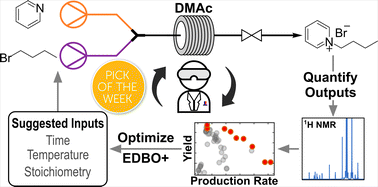
Chem. Sci., 2023,14, 8061-8069
https://doi.org/10.1039/D3SC01303K
Programmed guest confinement via hierarchical cage to cage transformations
A novel methodology based on the use of phenanthrenequinone is applied to selectively change the subcomponent of TPMA-based cages, thus controlling inclusion ratio of competing guests differing in size or chirality.

Chem. Sci., 2023,14, 8147-8151
https://doi.org/10.1039/D3SC01368E
Ultrabright two-photon excitable red-emissive fluorogenic probes for fast and wash-free bioorthogonal labelling in live cells
Our best fluorogenic probe enables live-cell imaging with high-contrast and no need for washing steps.

Chem. Sci., 2023,14, 8119-8128
https://doi.org/10.1039/D3SC01754K
Terminal methylene phosphonium ions: precursors for transient monosubstituted phosphinocarbenes
Diprotic terminal methylene phosphonium ions were prepared using bulky N-heterocyclic imine substituents. Deprotonation yields transient monosubstituted phosphinocarbenes, which insert into the C![[double bond, length as m-dash]](https://www.rsc.org/images/entities/char_e001.gif) C bond of a phenyl ring via a Buchner ring expansion.
C bond of a phenyl ring via a Buchner ring expansion.

Chem. Sci., 2023,14, 7928-7935
https://doi.org/10.1039/D3SC02899B
A highly enantioselective intramolecular 1,3-dipolar cycloaddition yields novel pseudo-natural product inhibitors of the Hedgehog signalling pathway
Synthesis of pyrrolo[3,2-c]quinoline pseudo-natural products by means of a highly enantioselective intramolecular 1,3-dipolar cycloaddition yielded a novel Hedgehog signalling inhibitor chemotype that targets the Smoothened protein.

Chem. Sci., 2023,14, 7936-7943
https://doi.org/10.1039/D3SC01240A
About this collection
This themed collection highlights and celebrates articles shared by our authors using the #MyFirstChemSci hashtag on social media in 2023. This collection covers a diverse range of research from authors publishing in Chemical Science for the first time, from researchers with their first ever ChemSci publication to those with their first corresponding-author ChemSci publication.
If you are publishing in Chemical Science for the first time, please do share your work on social media using #MyFirstChemSci or get in touch with us via email (chemicalscience-rsc@rsc.org) and we will be delighted to highlight your publication!